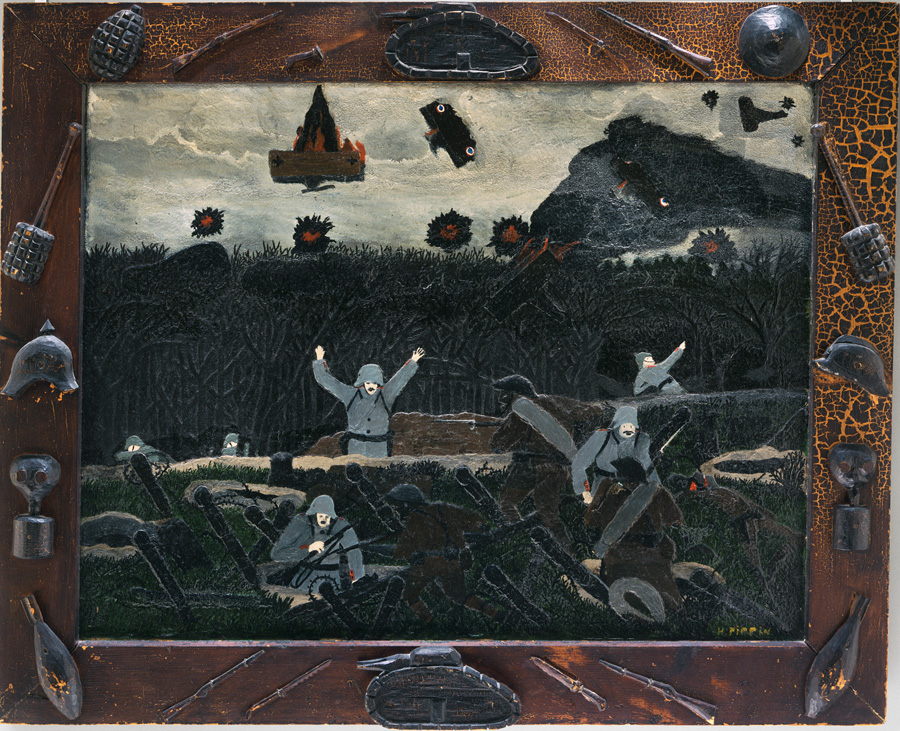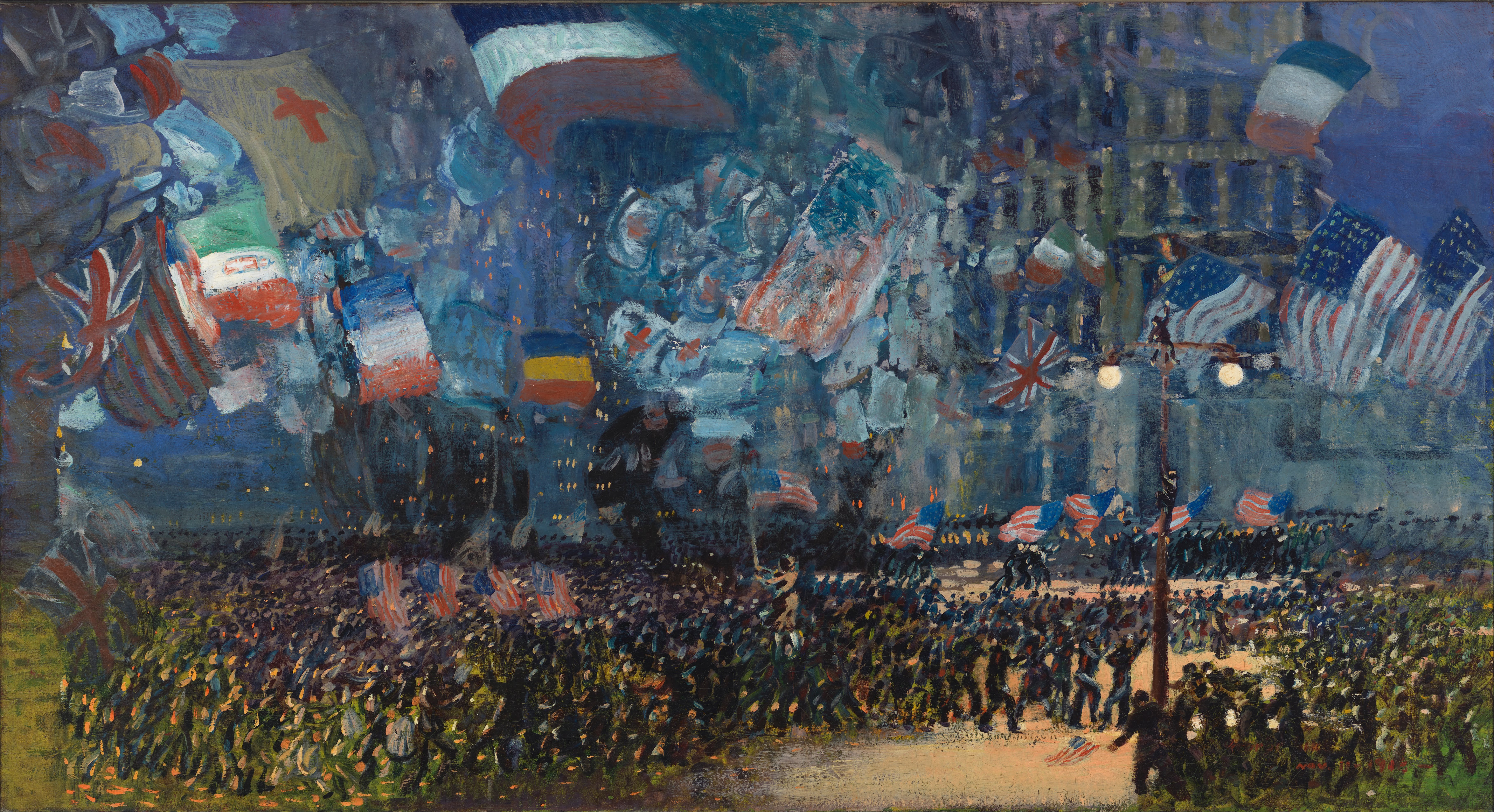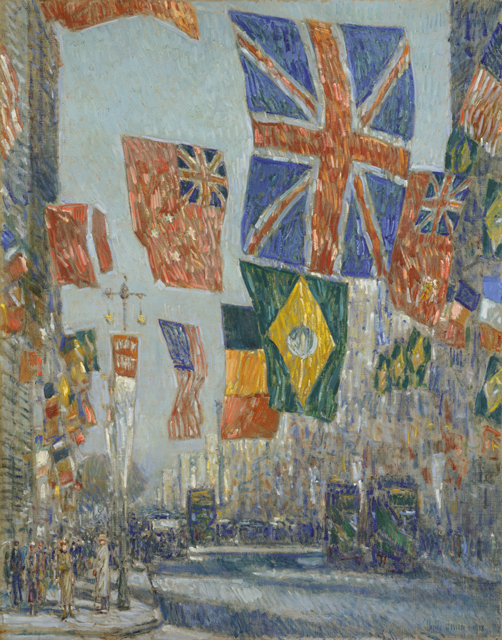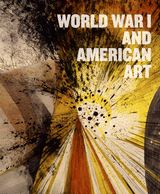May 26 – September 3, 2017
Frist Center for the Visual Arts, Nashville
October 6, 2017–January 21, 2018
To honor the centennial of America’s involvement in World War I, the New-York Historical Society presents a special exhibition examining this monumental event through the eyes of American artists. On view May 26 through September 3, 2017, World War I Beyond the Trenches explores how artists across generations, aesthetic sensibilities, and the political spectrum used their work to depict, memorialize, promote, or oppose the divisive conflict.
Featuring more than 55 artworks from the recent exhibition World War I and American Art organized by the Pennsylvania Academy of the Fine Arts, the exhibition includes John Singer Sargent’s masterpiece Gassed, which has never traveled to New York before;
Childe Hassam’s The Fourth of July, 1916, a recent gift from Chairman Emeritus Richard Gilder; and powerful works by George Bellows, Georgia O’Keeffe, Horace Pippin, and Claggett Wilson, among other American artists. The New York presentation also showcases artifacts from New-York Historical’s collection to provide greater historical context―such as World War I propaganda posters, a soldier’s illustrated letters, contemporary sheet music, uniforms and military gear, and a battlefield diorama with vintage toy soldiers.
Exhibition Highlights
World War I Beyond the Trenches is organized chronologically into four thematic sections: Debating the War explores artists’ pro- or anti-interventionist stances as America determined its involvement in the conflict, Mobilization showcases artists’ creative skills being put to use for propaganda or motivational messages, Waging War captures the intensity of the battlefield experience and lingering impact on soldiers’ lives, and Celebration and Mourning expresses the aftermath of war and the elation, reflection, and mourning that followed.
John Singer Sargent (1856–1925), Gassed, 1919. Oil on canvas, 90 ½ × 240 in. Courtesy of IWM (Imperial War Museums), London. Photo: ©IWM Imperial War Museums, Art.IWM ART 1460
The exhibition opens with John Singer Sargent’s monumental painting Gassed (1919), on loan from the Imperial War Museums in London, which evokes a haunting scene that the artist witnessed in 1918. Ten British soldiers blinded by mustard gas are being led toward treatment, holding onto each other for support as they pass through their fallen comrades, while off-duty soldiers play soccer in the background. The tableau captures the spectrum of life in the midst of suffering, as well as Sargent’s view that war creates moral blindness as soldiers follow their leaders into chaos, darkness, and oblivion.
The Debating the War section features works by Childe Hassam, who was active in the pro-interventionist movement and painted dozens of patriotic works that captured the massive public displays of American and Allied flags in New York City, which were powerful symbols of national unity and a call to arms to protect the democracy that they represented.
George Bellows initially took a pacifist position but was moved by accounts of civilian atrocities to create vivid works like The Germans Arrive (1918), a shocking scene of soldiers brutally attacking townspeople. His reversal of position illustrates how attitudes about U.S. involvement shifted for many Americans as the humanitarian crisis grew abroad and neutrality posed a moral dilemma.
Mobilization includes propaganda imagery created by artists to motivate American involvement in the war, showcasing
James Montgomery Flagg’s iconic “Uncle Sam” poster I Want You for U.S. Army (1917)
and Joseph Pennell’s That Liberty Shall Not Perish from the Earth—Buy Liberty Bonds—Fourth Liberty Loan (1918), showing an imagined attack on New York City with lower Manhattan engulfed in flames and a headless Statue of Liberty. Women were also mobilized to enter the workforce or volunteer with organizations like the Red Cross, such as in
Jane Peterson’s watercolor Red Cross Work Room 5th Avenue, NYC During the War (c. 1917).
Sheet music and audio of popular wartime songs, such as George M. Cohan’s “Over There,” also feature in the exhibition.
The Waging War section includes powerful works by artist-soldiers Claggett Wilson and Horace Pippin, who recorded their wartime experiences abroad. Wilson’s harrowing and hallucinatory watercolor
Flower of Death—The Bursting of a Heavy Shell—Not as It Looks, but as It Feels and Sounds and Smells (c. 1919) depicts an abstracted sunburst that immerses the viewer in the overwhelming experience of a shelling attack.
Pippin, a member of the African American regiment known as the Harlem Hellfighters, began making art as physical and emotional therapy after being shot in battle. His oil painting
The End of the War: Starting Home (1930–33) evokes a Judgment Day-like scene, and the handmade frame—adorned with carved grenades, bombs, helmets, tanks, and knives—seems to warn the viewer of the dangers within.
Other works on view sensitively depict the humanity of lost or wounded soldiers, such as Susan Macdowell Eakins’ Portrait of Lieutenant Jean-Julien Lemordant (1917), a French artist and pacifist who was blinded in action.
Illustrated letters from New-York Historical’s Patricia D. Klingenstein Library illuminate one New York soldier’s personal experience of the war, from the farewell parade in New York to military training to fighting “Somewhere in France.”
The final section, Celebration and Mourning, addresses the culmination of the war abroad and its lingering effects at home.
George Benjamin Luks’ Armistice Night (1918), a joyful nocturne of New Yorkers flooding the streets to celebrate the end of the war, captures Armistice Day on November 11, 1918. But the devastating loss of life deeply affected many artists.
John Steuart Curry’s The Return of Private Davis from the Argonne (1928–40) depicts the ceremonial reburial of his high school friend, whose body was returned from Europe in 1921, three years after being tragically killed on his first night on watch. Curry’s delayed reaction in depicting the event—the painting was completed seven years later—was common among those in mourning or who had experienced the war firsthand, even as his work presaged the onset of another devastating war on the horizon.
A number of special installations throughout the first floor of the Museum, including a contemporary artwork and World War I historical artifacts, complement the exhibition and offer additional context about the wartime American experience.
The Monumental Case in Smith Hall features artist Debra Priestly’s somewhere listening: Company B, 365th Infantry Regiment, 92nd Division, A.E.F. 1918-1919 (2014), an installation work of graphite portraits on gessoed panels depicting 212 soldiers in a photograph from her grandmother’s collection. The haunting images appear as a memorial to this African American unit, which included Priestly’s great uncle.
Also on display, more than 30 propaganda posters for the war effort—drawn from the Gilder Lehrman Collection and New-York Historical’s own holdings—depict imagery that New Yorkers would have seen daily on billboards, in schools, and in offices. Posters include an image of a Red Cross nurse with outstretched arms used to motivate women to join the war effort, and
Colored Man Is No Slacker (1918), depicting a couple’s farewell before he joins the wave of soldiers passing by, an image that encouraged African American men to join segregated units.
On view in the rotunda is a battlefield diorama of World War I soldiers and accessories from the recently acquired Robert C. Postal Collection of Toy Soldiers, accompanied by surrounding motion graphics to replicate trench warfare in miniature. A display of military uniforms and military gear features an American infantryman with complete field gear including an M1917 rifle and a rare army field message sending Company C of the 308th Infantry Regiment of New York’s famous 77th Division into the Argonne Forest where they were remembered forever to history as the “Lost Battalion.” Hand-sewn patches and battlefield souvenirs brought home by returning Doughboys round out the display.
Avenue of the Allies
Childe Hassam
Symphony of Terror,
Claggett Wilson
Publication
The publication World War I and American Art accompanies the exhibition and includes many additional works and multiple scholarly essays. It is published by PAFA in association with Princeton University Press .
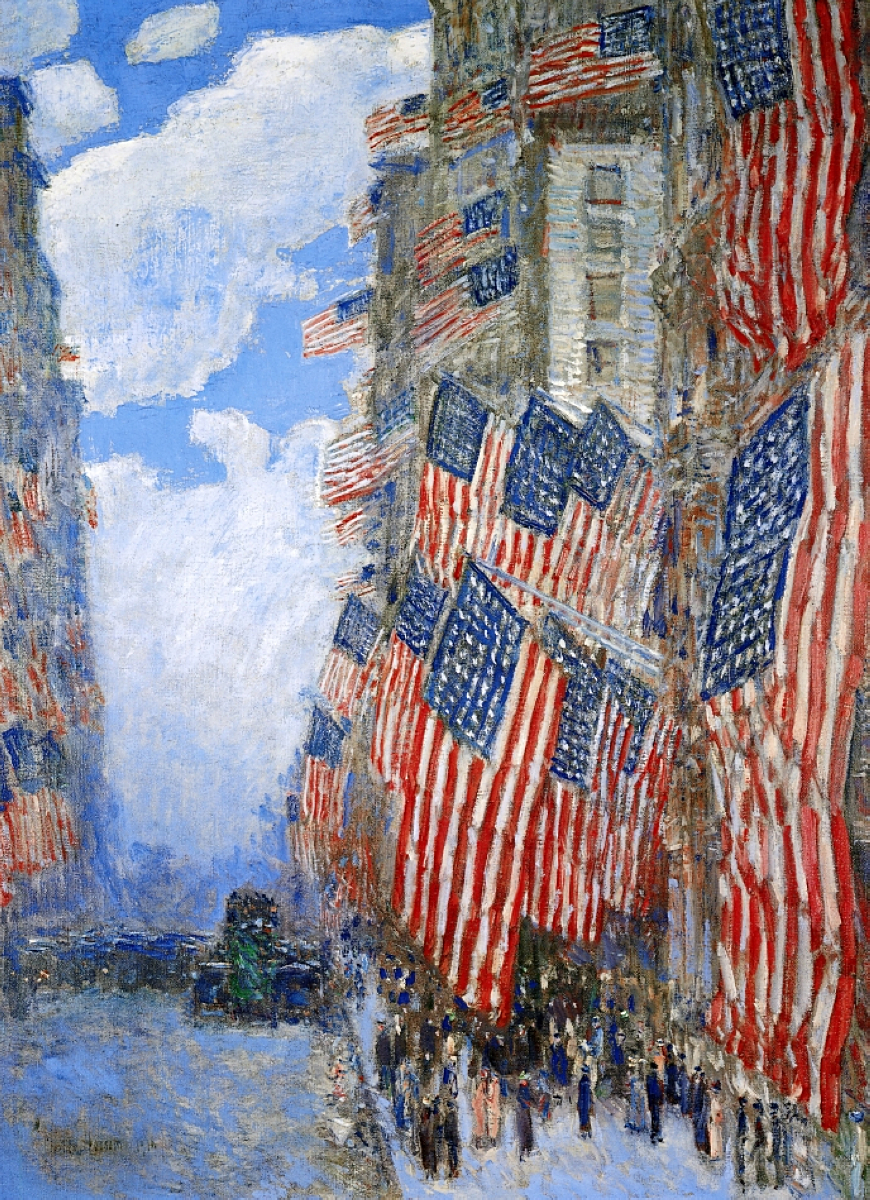
_-_Gassed_-_Google_Art_Project.jpg/1200px-Sargent%2C_John_Singer_(RA)_-_Gassed_-_Google_Art_Project.jpg)





